
Can Toronto still enforce its green building standard? Ontario says no, but the city disagrees
The province said the newly-passed Bill 17 will take away the city’s authority to enforce...
Just outside the Arctic community of Cambridge Bay, Nunavut, two snowmobiles take off down an icy track. It’s a sunny, -13 C evening in May, and the high-pitched whine of engines cuts across the bay. The race lasts less than 10 seconds. Over a speaker, an announcer declares the winner, and another pair of riders make their way to the start line.
The races are part of Umingmak Frolics, the community’s annual spring festival, and take place on top of the frozen ocean that surrounds Victoria Island. Alongside the track, a crowd of roughly 200 has gathered to watch. The yearly festival also features traditional games, a parade, a fishing derby and a baby crawl contest. The sun won’t set until almost midnight, although this time of year it never gets completely dark.
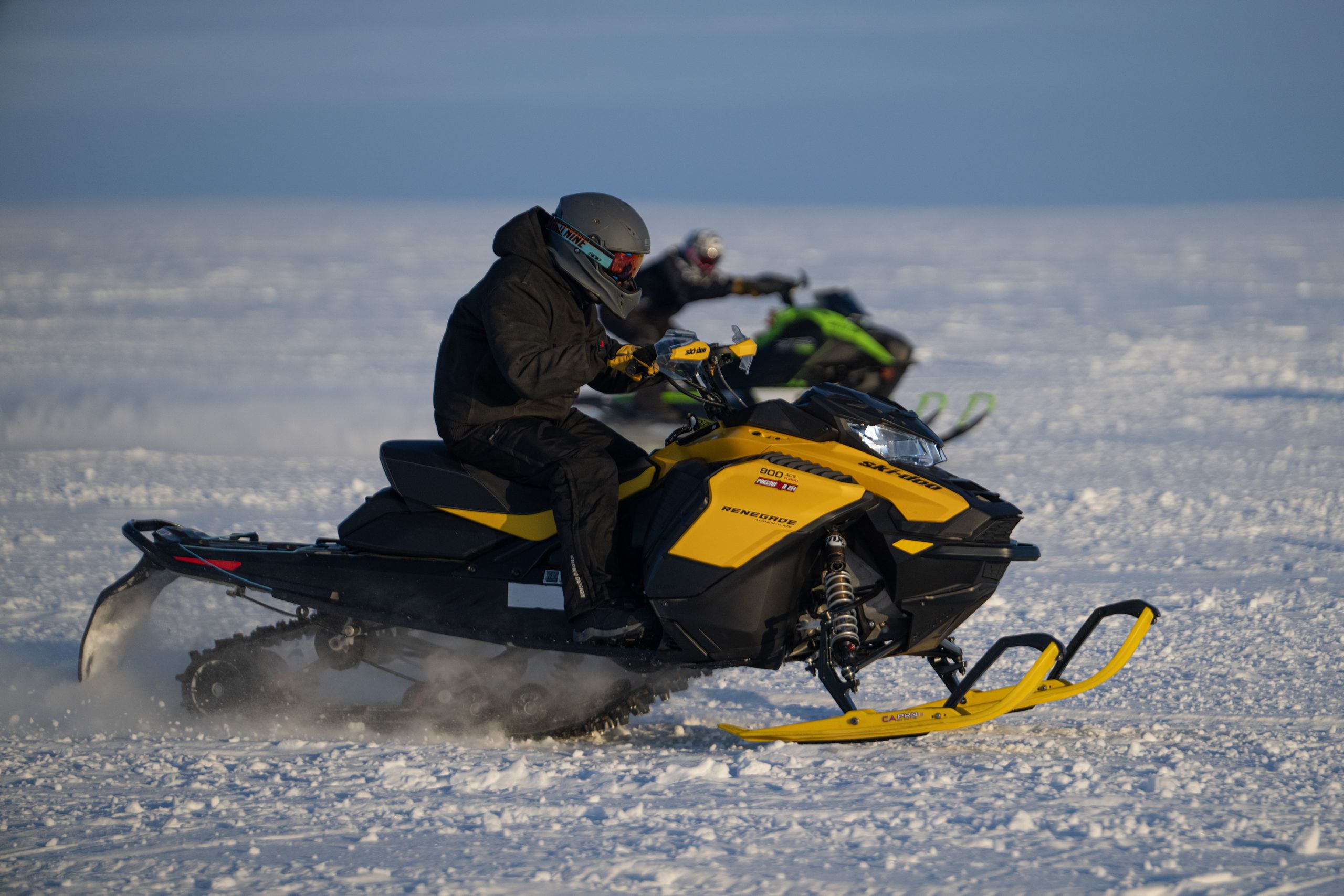


For much of the year, life in this Inuit community revolves around — or happens on — sea ice. It not only serves as a venue for snowmobile races, but also a platform for fishing, hunting, accessing other communities, transporting goods and simply getting around town. But as the Arctic rapidly warms, residents are witnessing the effects of dwindling ice. They’re also on the frontlines of an effort to save it.
About seven kilometres farther off the coast, researchers from the U.K. company Real Ice have been testing an approach to thicken sea ice so that it lasts longer into the summer. Their experimental method involves drilling holes through the ice and pumping seawater to the surface during the coldest months of winter. In the frigid air, the water quickly freezes, adding to the ice below. This past winter, the team pumped water in December, January and February. In May, they returned to the community to check on the thickened spots.
So far, the researchers have tested their approach over small areas, but their vision is to eventually refreeze one million square kilometres of the Arctic using underwater drones and hydrogen-powered pumps. The goal is to prevent — and potentially reverse — sea ice loss to help keep the planet cool.
Real Ice is wrapping up its second winter of experiments outside of Cambridge Bay, with backing from the University of Cambridge and the U.K. government. The project falls under the umbrella of geoengineering, a controversial category of climate-modifying interventions that includes tactics such as spraying reflective particles into the stratosphere to dim the sun, building giant underwater curtains to prevent ice sheets from melting and fertilizing the ocean to enhance its ability to absorb planet-warming carbon dioxide.
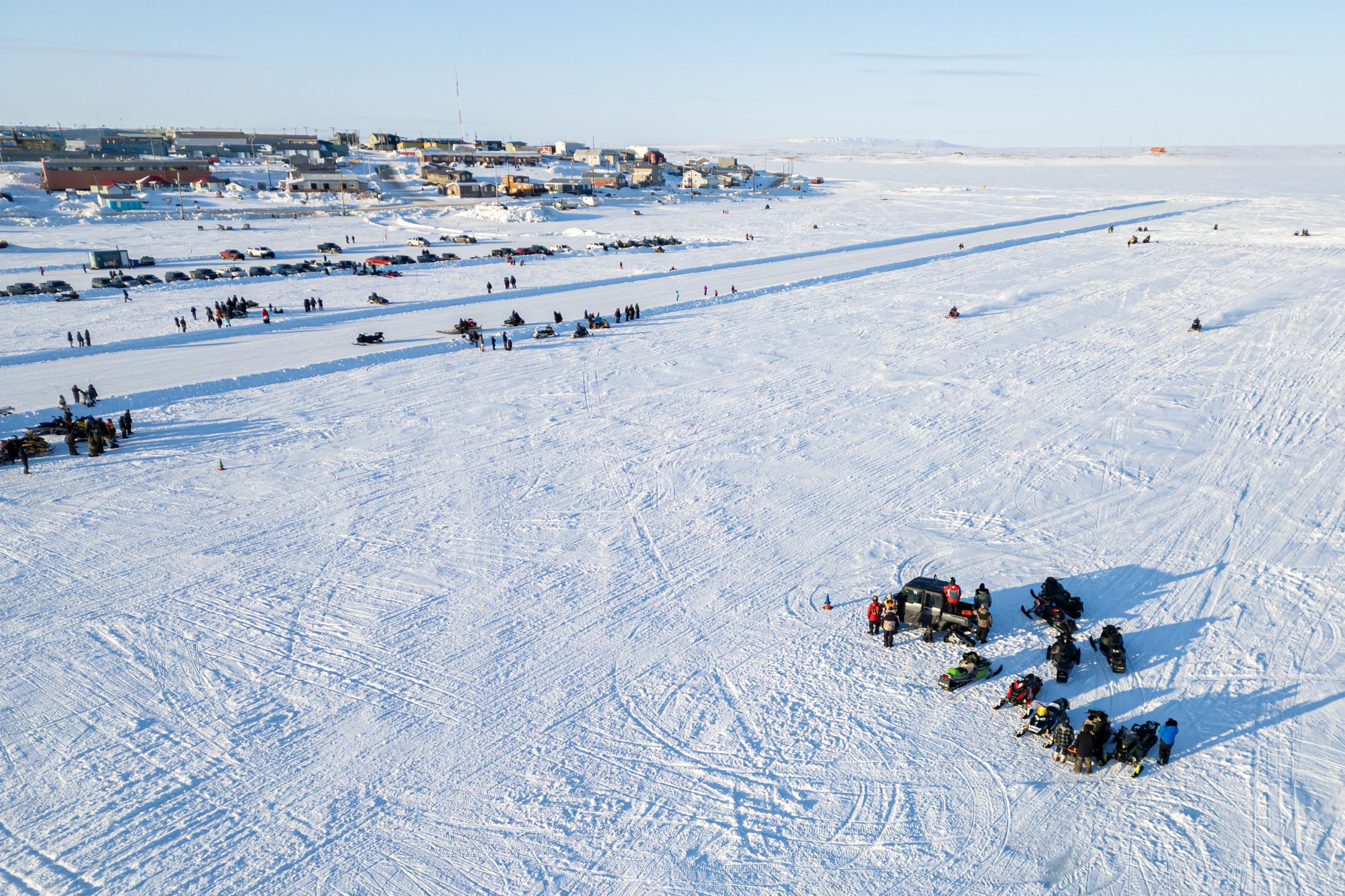
Despite their noble ambitions, geoengineering experiments have often been met with public opposition. In 2024, a Harvard-led project aimed at measuring the behaviour of reflective, sun-dimming particles in the stratosphere was abandoned after an initial test flight set to take place in Sweden drew backlash from a local Indigenous organization and environmentalists. In Alaska, a project proposing to spread tiny synthetic glass beads over sea ice was criticized by locals and cancelled due to potential risks to both wildlife and humans. Mexico is moving to ban solar forms of geoengineering, as are a growing number of U.S. states. Closer to home, a rogue ocean fertilization experiment off the coast of British Columbia in 2012 was condemned nationally and internationally.
Geoengineering is divisive among academics, too. While a growing number of scientists see geoengineering as a necessary form of climate action, others say such interventions are impractical, risky and a dangerous distraction from critical efforts to reduce emissions. Climate-modifying technologies also raise ethical issues. In the Arctic, attempts to fix the climate — often proposed by outsiders — have the potential to put northern communities at disproportionate risk while attempting to solve a problem that largely isn’t of their making.
But in Cambridge Bay — a hamlet of roughly 1,800 residents, most of whom are Inuit — people are largely supportive of the Real Ice project.
“I think almost everybody’s in agreement,” Jim MacEachern, chief administrative officer for the Municipality of Cambridge Bay, says. The more informed the community is about changes in sea ice and tools to mitigate those changes, the better, he says.
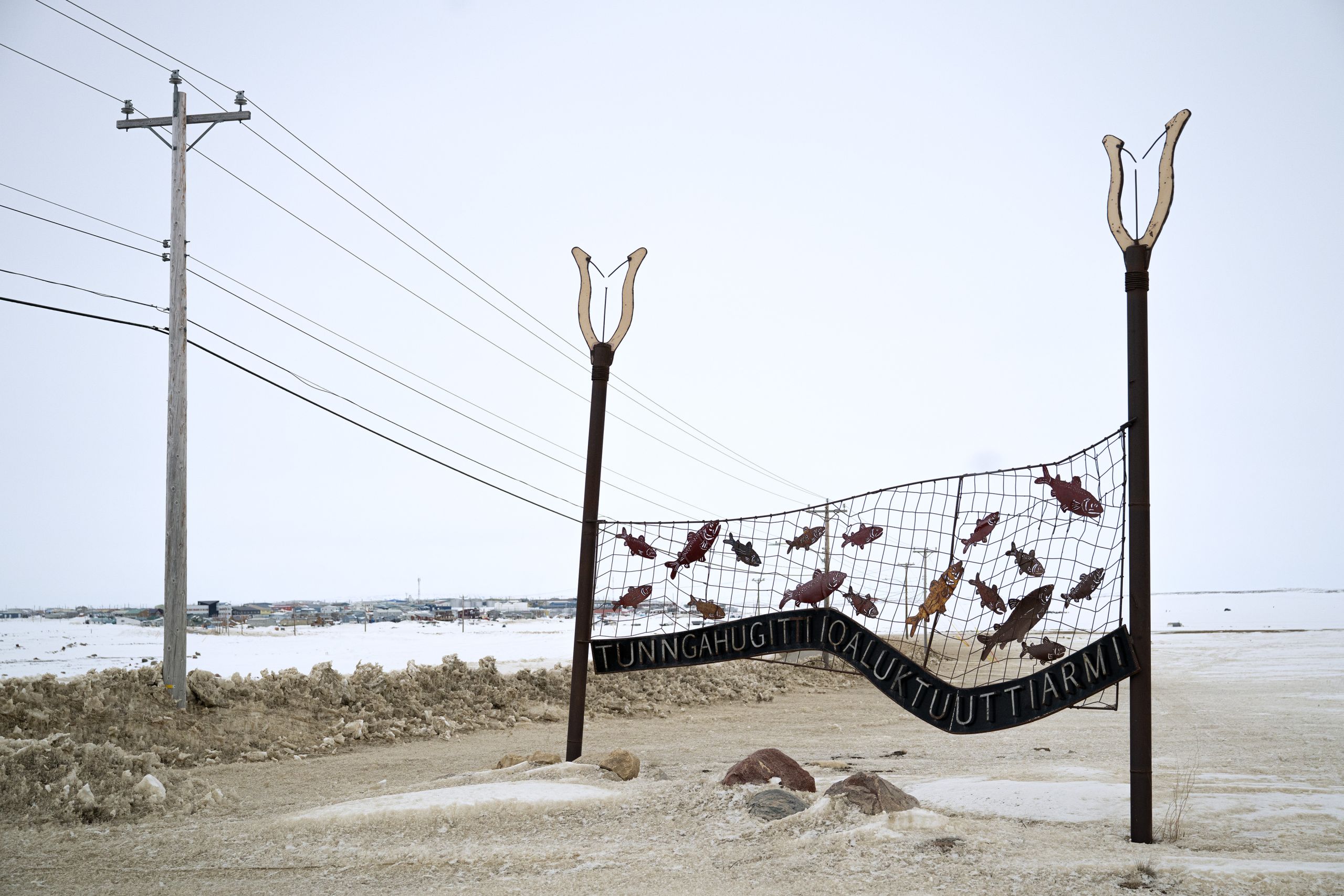
The idea behind the Real Ice project has its roots in a place entirely unlike the Arctic: Arizona.
In a 2017 paper, researchers from Arizona State University proposed the notion of artificially thickening sea ice using wind-powered pumps.
“The Arctic is really the critical piece,” Steve Desch, a professor of astrophysics and the paper’s lead author, says. Desch typically studies ice in space. But after becoming disillusioned with the slow pace of climate action, he started looking for solutions to buy humanity time, turning his attention to the icy North.

Arctic sea ice regulates global temperatures by reflecting sunlight back out to space. As sea ice melts, it gives way to open water, which absorbs solar radiation instead of bouncing it back. Though some level of Arctic ice contraction in summer is historically normal, the self-reinforcing cycle of warming and melting has become extreme.
In recent decades, the extent and thickness of sea ice has been rapidly shrinking. Since 1979, the volume of ice that survives the melt season has declined by roughly 70 per cent.
A future where the Arctic is mostly ice-free in summer has become almost inevitable. Researchers predict this situation could arise as soon as the 2030s, even if nations cut emissions faster than they currently are. An ice-free Arctic could raise global temperatures by an extra 0.19 C — roughly equivalent to a decade’s worth of warming.

But if sea ice were thicker, it might survive the summer, according to Desch’s research.
In 2019, Desch’s paper caught the eye of Cían Sherwin, then a graduate student at Bangor University in Wales. At the time, Sherwin was volunteering on a project looking into ecosystem restoration technologies, including ways to counteract sea ice loss.
In 2022, Sherwin co-founded Real Ice to further investigate the idea of ice thickening. The team conducted an initial demonstration in Nome, Alaska in 2023. In early 2024, they relocated to Cambridge Bay, drawn to the community’s long-lasting sea ice and cutting-edge research facility, the Canadian High Arctic Research Station.
In 2024, the team pumped water onto an area roughly the size of a U.K. football pitch. They also conducted initial tests of a custom-built hydrogen-powered water pump. This past winter, using battery-powered pumps for the sake of efficiency, they re-iced an area of roughly 200,000 square metres — about four times the size of Toronto’s Rogers Centre.

Preliminary results are promising. In the winter of 2024, the ice in the test area was an average of 25 centimetres thicker than a nearby control area. This winter’s data has yet to be analyzed, but as of May, re-iced areas were nearly half a metre thicker on average than control areas, the researchers say. Re-iced areas are also thickening from the bottom, suggesting the approach stimulates natural ice growth by reducing the insulating layer of snow.
According to Sherwin, the team’s relationship with the community of Cambridge Bay has also been positive. “We’ve been welcomed really well here,” he says.
Talia Maksagak was born and raised in Cambridge Bay. When she first heard about the project, she says the goal of saving sea ice immediately resonated.
“I’ve experienced a lot of changes in the climate in my 30 years,” Maksagak says. As the executive director of the Kitikmeot Chamber of Commerce, she helped the Real Ice team organize consultations when they first started working in the community.
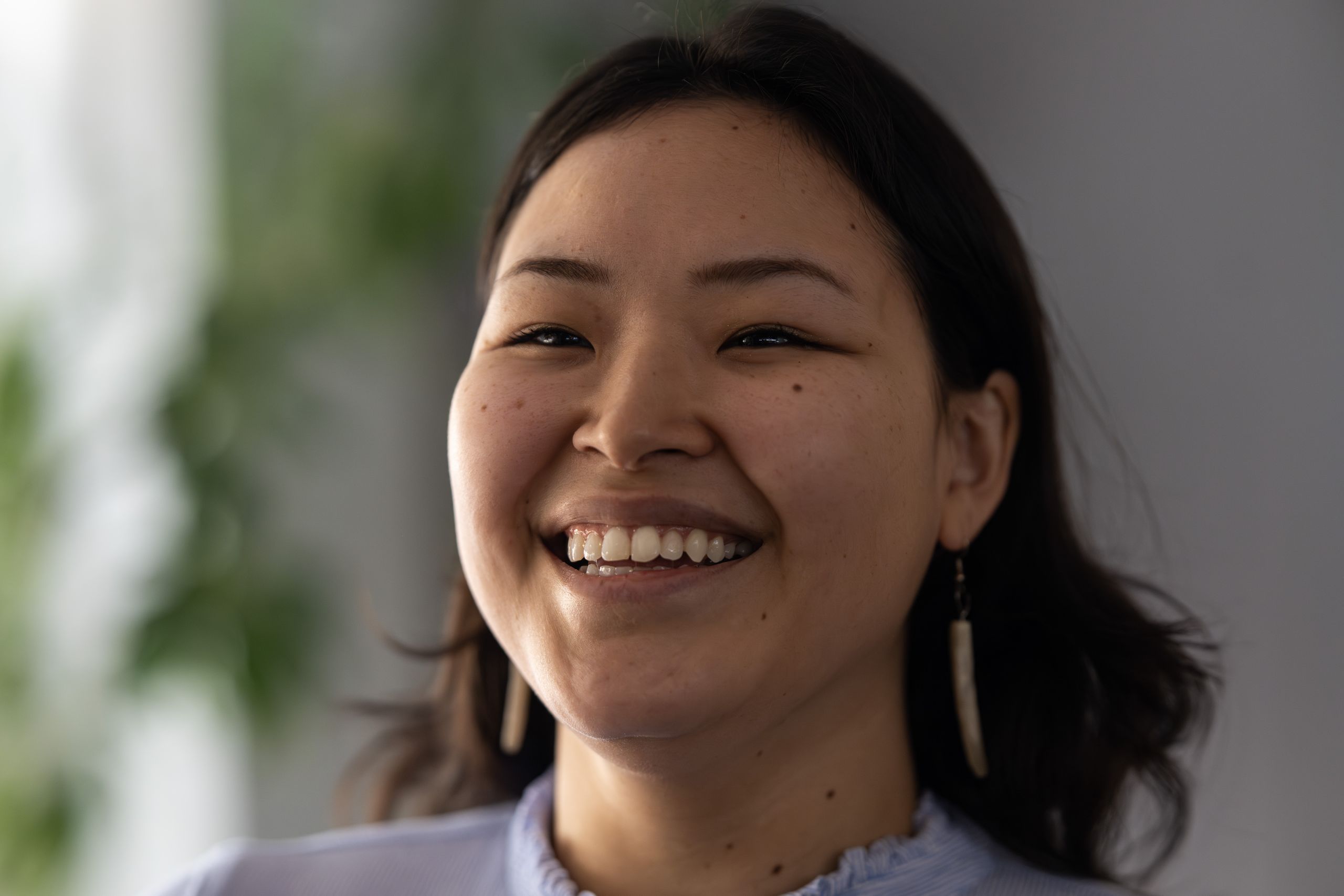
“We used to see muskox right on the street and the roads, and caribou very close. My children don’t get to experience that because of how much it’s changed,” she says.
In Cambridge Bay, residents are experiencing the impacts of warming in other ways, too. Ice melts weeks earlier in spring and freezes months later in fall. Animals’ movements across the ice — including caribou’s twice-yearly migration to and from the mainland — are impeded, with some breaking through thin ice and drowning. Changes in the ice also put people at risk. Dangerous ice cracks show up in unexpected places, and in recent years, several people have fallen through thin ice.
Even the community’s spring festival has not been spared. For the past few years, organizers have had to schedule Umingmak Frolics a week early. This past winter was so mild it was unclear if the snowmobile races would happen at all.

If the community starts working toward saving sea ice now, Maksagak says, maybe local cultural practices and stories tied to the ice can continue for longer.
Henry Ohoilak, an Elder in the community, echoed Maksagak, saying he hopes future generations have the same opportunities he did. Ohoilak grew up on the land until he was 14, living in tents or snow houses, depending on the season, and travelling by dog team.
“I feel sorry for the generation to come,” he says, adding that Real Ice might help get the youth off their phones and out learning about ice.
Not everyone in Cambridge Bay knows about the project yet. Sherwin and his colleagues have conducted five public consultations since January 2024, which drew 50 participants. The community and its environment are constantly being studied by researchers drawn to the Canadian High Arctic Research Station, however, causing some residents to disengage.
“There’s just a small group of people that show interest in this stuff,” Brent Nakashook, a board member of the local hunters and trappers’ organization and general manager of the community’s fish and meat processing plant, says. Nakashook has also served as a local guide for the Real Ice team.

He described the community’s approach to new projects as welcoming, as long as they don’t pose a risk to natural resources. Many projects do: a pre-print co-authored by 42 scientists warns that geoengineering in the Arctic could cause “severe environmental damage and comes with the possibility of grave unforeseen consequences.” Injecting aerosols into the stratosphere, for instance, could alter global climate patterns, reducing rainfall in some regions, and underwater curtains could act as a barrier to marine life. In comparison, critics say thickening sea ice poses less of an inherent risk to the environment, although it is not entirely risk-free.
Some Cambridge Bay residents have raised concerns about possible impacts to wildlife. For now, Nakashook thinks the research is unlikely to cause environmental harm. The Nunavut Impact Review Board, through which the team applied for research permits, also concluded the work to date is unlikely to cause adverse environmental or social impacts.
“We’re in the early stages, and we’ll see where it goes from here,” Nakashook says. The project is expected to undergo an environmental assessment as the research continues.
If negative effects arise, Nakashook says the project will be required to stop.
He added, “It’s still interesting that somebody is giving it a shot.”

On an overcast morning, Sherwin and his colleagues mount snowmobiles and head to their research site to take final measurements of the re-iced areas. They bump across the ice in pairs behind Nakashook, who is the researchers’ guide for the week. Eventually, they reach one of the re-iced spots, which looks indistinguishable from the surrounding environment. Hardened, wind-swept snow stretches across the horizon, blurring into a sky of nearly identical white.
The team swiftly gets to work, drilling cores and measuring the thickness of snow and ice. The ice cores will be used to check that the new ice isn’t unnaturally salty, which could make it melt more easily in the spring. So far, the researchers say the ice seems to be rejecting brine quite well.
As they work, the team chats and jokes around. It’s an unlikely mix of personalities. Along with Sherwin and Nakashook, Desch and another co-author of the 2017 paper are in the field, as are two doctoral students from the University of Cambridge. One student, Jacob Pantling, an engineer with a British accent, is the subject of much teasing from Nakashook, a skilled hunter and casual jokester.
When Nakashook offers everyone pieces of dried or smoked char as a mid-morning snack, he tells Pantling: “Have some fish, Jake. You need to build some muscle.”
“What are you saying? I’m not muscly enough as it is?” Pantling responds, laughing.



The community’s relationship with the Real Ice team was described by one resident as “comfortable.” That hasn’t happened by chance.
Sherwin is mindful of avoiding the extractive dynamic that has often characterized Arctic research. He’s also careful to learn from the mistakes made by other geoengineering experiments. According to Sherwin, the ultimate downfall of projects such as the sun-dimming experiment in Sweden and the effort to spread glass beads on ice in Alaska was a lack of public consultation.
“The technology, obviously, is one part of it, but I think the engagement was the ultimate kind of nail in the coffin,” he says.
From the early stages of the project, Sherwin has sought to understand what northerners think about ice thickening. He initially travelled to Iqaluit to gauge interest in the technology. Since starting work in Cambridge Bay, the team has spoken with Elders, held a demonstration for middle schoolers and consulted with local organizations to select a site that wouldn’t disturb hunting or fishing activities. The researchers have also been hiring community members to work on the project and hope it will eventually be largely locally owned and operated.

Still, the team is conscious of not imposing their ideas or making assumptions about what residents want. They acknowledge that there may be certain benefits to declining sea ice.
“There are reasons to recognize that there is a give and take about the changing Arctic,” says Hilairy Hartnett, director of the School of Oceanography at the University of Washington and a co-author of the 2017 paper. Both Desch and Hartnett are now science advisors with Real Ice.
Compared to other types of geoengineering, the technology itself is somewhat familiar to people, Sherwin notes. A similar approach is already used to build ice roads and skating rinks.
In fact, Sherwin sees ice thickening as closer to ecosystem preservation than geoengineering. Because it enables a natural process, he says, restoring sea ice is akin to saving rainforests, peat bogs or coastal sand dunes.
Not everyone agrees. Outside of Cambridge Bay, some scientists warn that pumping water on top of ice could alter the region’s ecosystem. There have also been serious doubts about the feasibility of scaling up to a meaningful extent. The project’s ultimate goal, which would involve re-icing large swaths of the Arctic much further north than Cambridge Bay, would require an estimated 500,000 drones and cost $10 billion per year. And as sea ice drifts between international boundaries, ice thickening projects may face jurisdictional barriers.
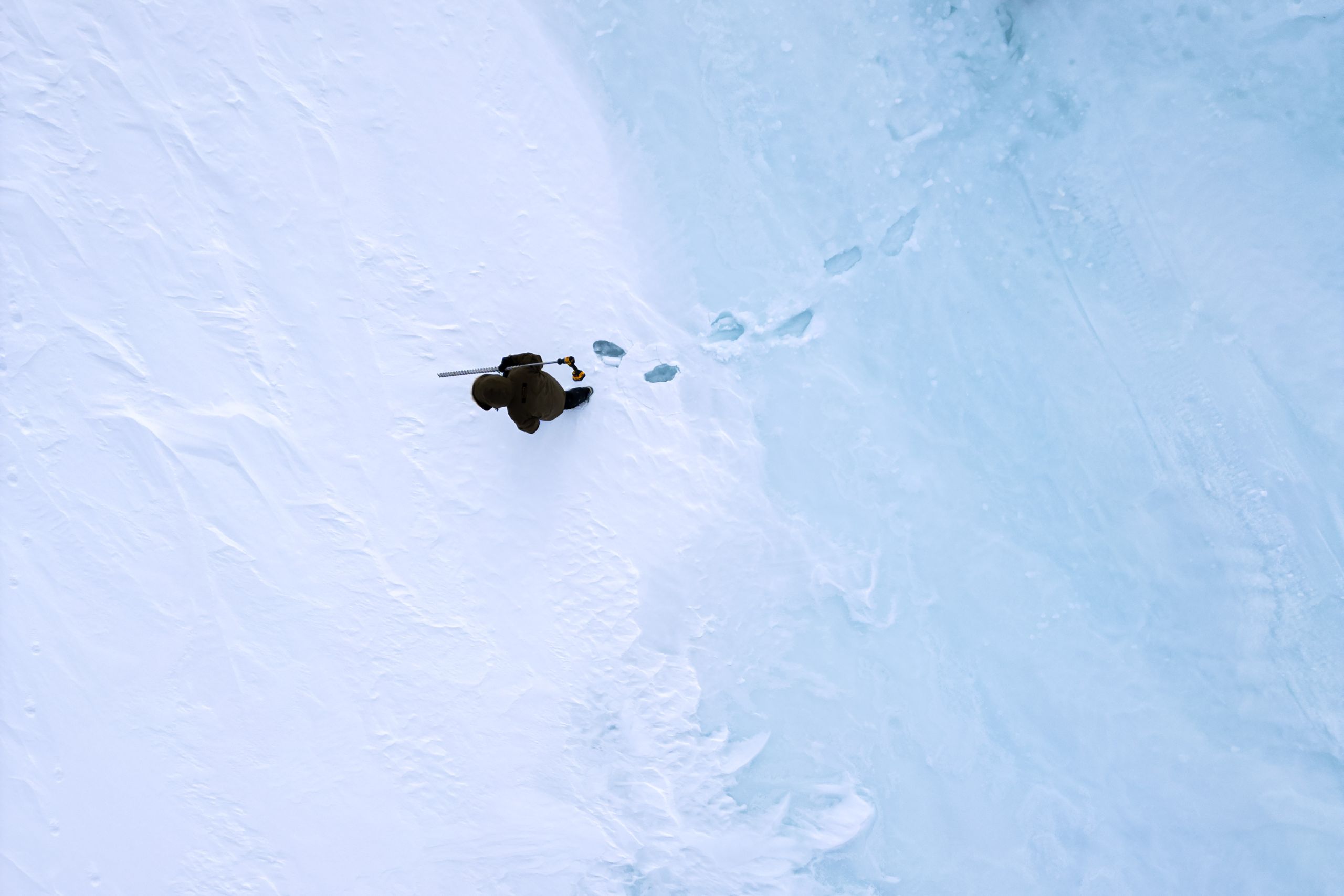
The fundamental issue, however, is that ice thickening does not address the root cause of sea ice loss, according to Mark Serreze, director of the National Snow and Ice Data Center at the University of Colorado Boulder, who is not involved in the project.
“This is a Band-Aid,” he says.
Nonetheless, Serreze thinks there may be a role for the approach at a smaller scale to improve ice conditions for Arctic communities.
That’s what Cambridge Bay residents see in the project, too.
Sea ice thickening could be used to build a road to the mainland in winter, according to Nakashook. Already, a project has been proposed to build an all-season road from Yellowknife to Grays Bay at the edge of the Northwest Passage, just south of Victoria Island. An ice road across the passage could provide the final stretch.



Thickening snowmobile routes could also help keep residents safe, according to MacEachern.
Sherwin and his colleagues plan to continue working toward a larger-scale demonstration, with the goal of re-icing a 100-square-kilometre area three winters from now, likely somewhere farther away from the community.
But even if ice thickening were only ever used locally, Sherwin says he would be satisfied. The project would still have succeeded in providing residents with a means of addressing some of the problems they face, he says.
For MacEachern, combatting climate change is not top of mind.
“Anything we can do to improve the overall climate, great,” he says. “But the local impacts are the number one priority.”
The land just outside the powwow arbour is filled with overgrown prairie grasses, patches of invasive plants and soil along the riverbank that is just...
Continue reading
The province said the newly-passed Bill 17 will take away the city’s authority to enforce...

As sea ice melts, Inuit cultural traditions are at risk of disappearing too. Could a...

Trouble in the Headwaters, a new short documentary by filmmaker Daniel J. Pierce, traces the...
